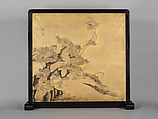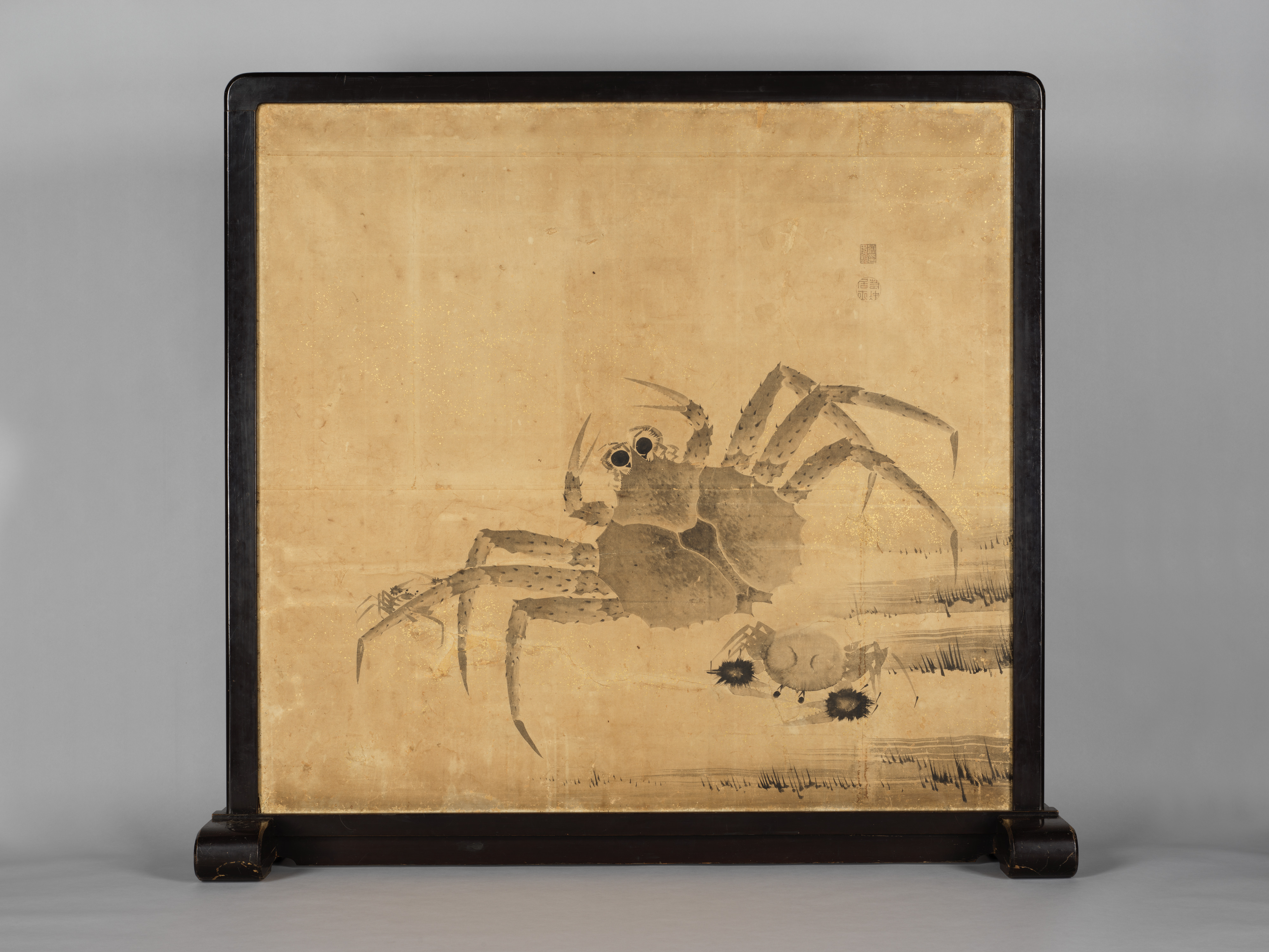Crabs and Peonies
Itō Jakuchū 伊藤若冲 Japanese
Not on view
This double-sided, freestanding screen, known as a tsuitate in Japanese, features a pair of ink paintings by one of early-modern Japan’s most imaginative and celebrated painters, Itō Jakuchū. On the front side of the screen, Jakuchū offers a slow, quiet scene, where three crabs of varying sizes—a large red king crab and a pair of smaller Japanese mitten crabs—seem to pass idly by one another on a grassy beach. The varied textures and colors of the crabs’ bodies serve as a playground for one of Jakuchū’s favorite ink-painting techniques, the so-called boneless method, mokkotsu, where he forgoes contour lines in favor of using carefully gradated and layered ink washes to define form. Jakuchū’s deliberate layering of washes and delineation of the red-tinted gray shell, spiny legs, eyes, and claws of the king crab contrast with his wetter, more exuberant treatment of the smaller crabs’ distinctively furry bodies, described variously by taking advantage of the splitting of hairs at the tip of his brush. On the verso, Jakuchū takes the viewer on an equally playful but profoundly contrasting exploration, this one grounded in his dynamic linework. Spirited and supremely confident, Jakuchū shows a grassy embankment where a clump of peonies is buffeted violently by the wind, its lower leaves and heavy blossoms twisted around a garden rock. His brush dances along the paper, creating repeating arcing shapes so that each ruffled petal and leaf of the peony, each blade of grass, all respond in unison to a strong, whipping wind. Like the crabs, the peony composition exemplifies Jakuchū’s keen sense of tonal balance. Where dark dots and flicks add texture to the crabs, here he anchors his composition with the jet-black contours and stippling of the rock.
Due to rights restrictions, this image cannot be enlarged, viewed at full screen, or downloaded.
This artwork is meant to be viewed from right to left. Scroll left to view more.



